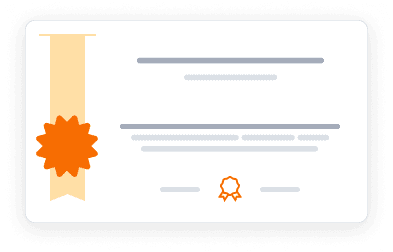Learn systematic problem-solving using computer science concepts. Develop algorithms and basic Python skills.
Learn systematic problem-solving using computer science concepts. Develop algorithms and basic Python skills.
Master computational thinking and problem-solving with this beginner-friendly course. Learn to approach complex issues systematically using computer science concepts. Explore the four pillars of computational thinking: decomposition, pattern recognition, data representation, and algorithms. Gain hands-on experience in algorithm development and analysis. Discover the fundamentals of computer architecture and learn to express solutions using pseudocode. Acquire basic Python programming skills to implement your algorithms. Perfect for students from any field looking to enhance their analytical and problem-solving abilities.
4.7
(1,391 ratings)
1,20,440 already enrolled
Instructors:
English
پښتو, বাংলা, اردو, 3 more
What you'll learn
Understand and apply the four pillars of computational thinking
Develop and analyze algorithms for problem-solving
Learn the fundamentals of computer architecture and operations
Express algorithms using pseudocode
Write simple Python programs to implement computational solutions
Apply computational thinking to real-world problems across various disciplines
Skills you'll gain
This course includes:
3 Hours PreRecorded video
27 quizzes, 1 assignment
Access on Mobile, Tablet, Desktop
FullTime access
Shareable certificate
Closed caption
Get a Completion Certificate
Share your certificate with prospective employers and your professional network on LinkedIn.
Created by
Provided by

Top companies offer this course to their employees
Top companies provide this course to enhance their employees' skills, ensuring they excel in handling complex projects and drive organizational success.





There are 4 modules in this course
This course introduces computational thinking as a problem-solving approach using computer science concepts. Students learn the four pillars of computational thinking: decomposition, pattern recognition, data representation and abstraction, and algorithms. The course covers algorithm development and analysis, computer architecture basics, pseudocode, and introductory Python programming. Designed for beginners from any field, it provides a foundation for approaching complex problems systematically and expressing solutions computationally.
Pillars of Computational Thinking
Module 1 · 3 Hours to complete
Expressing and Analyzing Algorithms
Module 2 · 4 Hours to complete
Fundamental Operations of a Modern Computer
Module 3 · 3 Hours to complete
Applied Computational Thinking Using Python
Module 4 · 6 Hours to complete
Fee Structure
Payment options
Financial Aid
Instructor
Weiss Professor of Computer and Information Science at the University of Pennsylvania
Susan B. Davidson is the Weiss Professor of Computer and Information Science (CIS) at the University of Pennsylvania, where she has been a faculty member since 1982. She earned her B.A. in Mathematics from Cornell University in 1978, followed by an M.A. and Ph.D. in Electrical Engineering and Computer Science from Princeton University in 1980 and 1982, respectively. Dr. Davidson's research focuses on several key areas, including database and web-based systems, scientific data management, data provenance, crowdsourcing, and data citation. Her contributions to the field have made her a prominent figure in computer science, particularly in the context of managing and utilizing data effectively in various applications.
Testimonials
Testimonials and success stories are a testament to the quality of this program and its impact on your career and learning journey. Be the first to help others make an informed decision by sharing your review of the course.
Frequently asked questions
Below are some of the most commonly asked questions about this course. We aim to provide clear and concise answers to help you better understand the course content, structure, and any other relevant information. If you have any additional questions or if your question is not listed here, please don't hesitate to reach out to our support team for further assistance.



